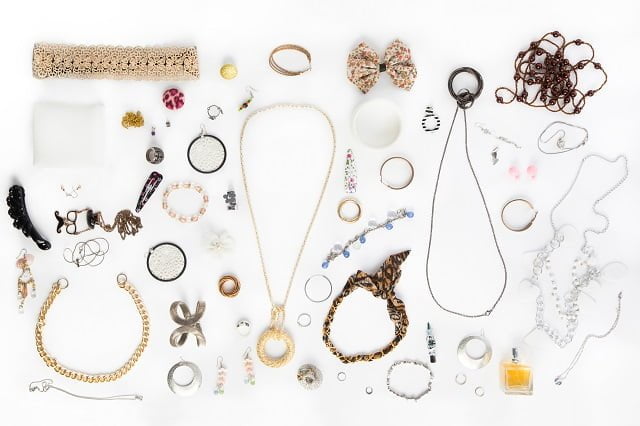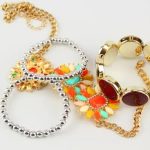The history of jewelry making books plays a crucial role in understanding the evolution of jewelry making techniques. From ancient civilizations to the modern era, these books have documented and preserved the knowledge and skills required for crafting exquisite jewelry. By delving into the history of jewelry making books, we gain a deeper appreciation for the traditional methods and innovative styles that have shaped the craft over time.
In exploring the earliest known jewelry making techniques, we are able to uncover the fascinating ways in which ancient civilizations created and adorned themselves with jewelry. The impact of the Victorian era on jewelry making introduced new materials and styles, while the art nouveau movement brought about a significant shift in design and innovation.
As we examine how technological advancements have influenced modern jewelry making, it is evident that these books have played a vital role in preserving and passing on traditional techniques.
Throughout history, the evolution of jewelry making books has mirrored the changes in jewelry design and craftsmanship. They have not only served as valuable resources for aspiring jewelry makers but also as windows to understanding cultural influences and artistic movements. As we delve further into this article, we will explore some of the most influential and iconic jewelry making books, as well as predict future trends in this ever-evolving craft.
Ancient Techniques
The history of jewelry making books dates back to ancient times when civilizations first began creating and adorning themselves with jewelry. These early techniques laid the foundation for the craft, influencing the art form for generations to come.
One of the earliest known jewelry making techniques is metalworking, with evidence of metal jewelry dating back as far as 7000 BCE in the form of copper beads. Ancient Egyptians also played a significant role in the development of jewelry making, using gold and precious gemstones to create intricate pieces that reflected their cultural and religious beliefs.
In addition to metalworking, ancient civilizations employed various other materials and techniques to create jewelry. For example, the Greeks and Romans utilized techniques such as filigree and granulation to produce delicate gold jewelry. In Asia, jade carving was a prominent technique used by Chinese artisans to craft ornate jewelry pieces. Understanding these ancient techniques is crucial for modern jewelry makers, as they provide insight into traditional methods that continue to inspire contemporary designs.
The impact of these ancient techniques on modern jewelry making cannot be overstated. Many of the styles and design elements popular in contemporary jewelry have roots in ancient civilizations. By studying the history of these techniques through books and other resources, aspiring jewelry makers can gain a deeper appreciation for the craft and its rich heritage.
| Ancient Techniques | Data |
|---|---|
| Metalworking | Evidence of copper beads dating back to 7000 BCE |
| Greek & Roman Techniques | Use of filigree and granulation in crafting gold jewelry |
| Asian Techniques | Jade carving in Chinese jewelry making |
Victorian Era Influence
The Victorian era marked a significant influence on the art of jewelry making. During this time, there was a shift in jewelry design and techniques, leading to the introduction of new materials and styles that continue to inspire modern jewelry makers.
The Victorian era spanned from 1837 to 1901, and it was a period characterized by romanticism, elegance, and opulence. This era greatly impacted the way jewelry was made and adorned, setting a standard for craftsmanship and design that is still admired today.
During the Victorian era, jewelry making saw the use of new materials such as jet, pearl, coral, and agate. These materials were often intricately crafted into pieces that reflected the sentimentality and symbolism of the time. Additionally, advancements in metalworking techniques allowed for intricate filigree designs and delicate metalwork to become prominent features in Victorian jewelry. Queen Victoria’s personal preference for sentimental pieces also led to the popularization of lockets, mourning jewelry, and intricate engraved designs.
The influence of the Victorian era on jewelry making is undeniable. Not only did it introduce new materials and techniques, but it also set a standard for craftsmanship and attention to detail that continues to inspire contemporary jewelry makers.
The sentimental value placed on jewelry during this period has left an enduring mark on the design principles followed by modern artisans. Understanding the impact of the Victorian era on jewelry making is crucial for anyone seeking to gain insight into traditional techniques and styles that continue to shape contemporary designs.
- New materials introduced during Victorian era
- Jet
- Pearl
- Coral
- Agate
- Advancements in metalworking techniques
- Intricate filigree designs
- Delicate metalwork
- Popularization of sentimental pieces
- Lockets
- Mourning Jewelry
- Engraved designs
Art Nouveau Movement
The Art Nouveau Movement was a significant period in the evolution of jewelry design and making. This artistic movement, which emerged in the late 19th century and continued into the early 20th century, had a profound impact on the styles and techniques used in creating jewelry. Art Nouveau jewelry is characterized by its use of organic forms, asymmetrical designs, and incorporation of natural elements such as flowers, insects, and animals.
During this time, jewelry designers drew inspiration from nature and sought to create pieces that were not only visually stunning but also reflected their appreciation for the natural world. Some famous jewelry designers who made significant contributions during the Art Nouveau Movement include René Lalique, Georges Fouquet, and Henri Vever. Their innovative designs set new trends in jewelry making that continue to influence modern artisans.
Key Features of Art Nouveau Jewelry
- Organic motifs such as irises, lilies, dragonflies, and peacock feathers
- Use of enamel, ivory, horn, and other non-traditional materials
- Emphasis on asymmetry and fluid lines
The Art Nouveau Movement paved the way for experimentation with unconventional materials and techniques in jewelry making. It challenged traditional methods while embracing innovation and creativity. This period marked a departure from the rigid styles of the Victorian era and laid the foundation for modernist approaches to jewelry design. The influence of the Art Nouveau Movement can still be seen in contemporary jewelry making practices, making it an essential part of the history of jewelry making books.
Modern Innovations
Since the ancient techniques and traditional craftsmanship of jewelry making, the industry has seen significant advancements with the introduction of modern innovations. Technology has played a pivotal role in revolutionizing the way jewelry is designed, crafted, and marketed. With the use of computer-aided design (CAD) software and 3D printing, jewelry designers are able to create intricate and complex designs that were once difficult to achieve by hand.
Furthermore, modern materials such as titanium, stainless steel, and ceramic have expanded the possibilities for jewelry making. These materials not only offer durability and strength but also provide a contemporary edge to traditional designs. Additionally, new methods of gemstone cutting and setting have allowed for greater precision and creativity in jewelry design.
The impact of modern innovations extends beyond just the manufacturing process. The rise of e-commerce and digital marketing has transformed the way jewelry is bought and sold. Online platforms have provided accessibility to a global audience, allowing for greater exposure and opportunities for jewelry makers.
Moreover, social media has become a powerful tool for promoting and showcasing unique pieces, enabling designers to connect directly with their customers. As technology continues to advance, it is certain that more exciting developments will shape the future of jewelry making books as well as the industry as a whole.
Evolution of Books
The evolution of books on jewelry making has been closely tied to the history and development of jewelry itself. As far back as ancient civilizations, people have been documenting their techniques and designs, providing a valuable record of the craftsmanship and artistry of their time. These early publications paved the way for the rich tradition of jewelry making books that we have today.
Ancient Texts and Manuscripts
Some of the earliest known writings on jewelry making date back to ancient Mesopotamia and Egypt, where artisans documented their methods and designs. These texts not only give us insight into the techniques used thousands of years ago but also serve as a testament to the cultural significance of jewelry in these societies.
During the Renaissance period, there was a renewed interest in preserving knowledge, leading to an increase in publications on various crafts, including jewelry making. This era saw the production of beautifully illustrated manuscripts that served as both instructional guides and works of art in their own right.
Industrial Revolution and Mass Production
The Industrial Revolution brought about significant changes in the world of jewelry making books. With advancements in printing technology, books became more accessible to a wider audience. This led to an increase in educational materials for aspiring artisans, as well as publications catering to hobbyists and enthusiasts.
In recent decades, there has been a surge in self-published books and online resources dedicated to jewelry making. The democratization of publishing has allowed for a greater diversity of voices and perspectives within the craft, ensuring that traditional techniques are preserved while also accommodating modern innovations.
Famous Jewelry Making Books
The history of jewelry making books is a fascinating journey that provides valuable insights into the evolution of techniques and styles in the world of jewelry design. Throughout history, books have played a crucial role in preserving traditional techniques and passing on the knowledge from one generation to another. As a result, there are several iconic jewelry making books that have significantly influenced the industry and the craft of jewelry making.
One such influential book is “The Art of Jewelry Making: Classic and Original” by Alan Revere. This book has been a go-to resource for budding jewelry makers and experienced artisans alike. It covers a wide range of topics from basic techniques to advanced skills, offering step-by-step guidance and expert tips. Alan Revere’s book continues to inspire and educate readers with its timeless approach to jewelry making.
Another notable mention is “The Complete Metalsmith” by Tim McCreight, which has been considered a must-have for anyone interested in metalworking. This comprehensive guide covers everything from tools and materials to various metalworking techniques, making it an essential resource for aspiring jewelry makers. The book’s clear instructions and detailed illustrations have made it a staple in many jewelry making workshops and studios around the world.
One more iconic jewelry making book that has left an indelible mark on the industry is “Jewelry Concepts & Technology” by Oppi Untracht. This expansive tome delves into the history, culture, and technical aspects of jewelry making, offering readers an extensive exploration of the craft. With its wealth of information and thorough research, this book has become a beloved reference for jewelry historians, designers, and enthusiasts alike.
These famous jewelry making books continue to shape the craft by providing invaluable knowledge, inspiration, and guidance to both aspiring artists and seasoned professionals. Their influence on the industry reaffirms the importance of understanding the history of jewelry making books in preserving traditional techniques while paving the way for future innovations in the field.
Future Trends
The future of jewelry making is a constantly evolving landscape, shaped by modern technology and globalization. As we look ahead, it is important to consider how these advancements will impact the craft and the role of books in preserving and advancing jewelry making techniques.
Modern Technology and Innovation
With the rise of technology, jewelry making has seen significant innovation. From 3D printing to computer-aided design (CAD), modern tools have revolutionized the way jewelry is created. These technological advancements have not only streamlined the production process but have also expanded the possibilities for design. The future of jewelry making books will undoubtedly include resources that incorporate these modern tools and techniques, providing aspiring makers with valuable knowledge on how to leverage technology in their craft.
Globalization and Cultural Exchange
Globalization has led to greater cultural exchange in all areas of art and craftsmanship, including jewelry making. As different cultures influence one another, new styles and techniques emerge, enriching the craft as a whole.
The future of jewelry making books will likely reflect this global exchange, showcasing a wide array of traditions and practices from around the world. Books will serve as a vital resource for understanding and learning from diverse cultural perspectives, ensuring that traditional techniques are preserved and celebrated.
The Role of Books in Preserving Tradition
Despite technological advancements, books continue to play a crucial role in preserving traditional jewelry making techniques. They serve as archives of knowledge, documenting time-honored methods that have been passed down through generations.
In the future, it is essential that this role be continued through comprehensive and informative publications that uphold the history of jewelry making books while also embracing new developments in the industry. By doing so, future generations of jewelry makers can continue to draw inspiration from the past while also pushing boundaries with innovative approaches.
As we look ahead to the future of jewelry making books, it is clear that they will remain an indispensable resource for aspiring makers and enthusiasts alike. By embracing new technologies, celebrating cultural diversity, and preserving traditional techniques, these publications will continue to shape the evolution of the craft for years to come.
Conclusion
In conclusion, the history of jewelry making books provides a fascinating insight into the evolution of jewelry making techniques and styles throughout the ages. From ancient civilizations to the modern era, the art of crafting and adorning oneself with jewelry has evolved significantly, influenced by various historical movements and technological advancements.
Understanding the ancient techniques used by early civilizations allows aspiring jewelry makers to appreciate the rich heritage and cultural significance of jewelry. The impact of the Victorian era introduced new materials and styles, while the art nouveau movement brought about a shift in design aesthetics, with renowned designers leaving their mark on the industry.
The evolution of jewelry making books has played a crucial role in preserving traditional techniques and passing on valuable knowledge from one generation to the next. By studying famous jewelry making books, enthusiasts can gain insight into influential methods and designs that have shaped the industry.
As we look towards the future, it is clear that technology and globalization will continue to shape the craft of jewelry making books, emphasizing the importance of understanding its history for aspiring creators and enthusiasts alike.
Frequently Asked Questions
What Is the History of the Beginning of Jewelry Making?
The history of jewelry making dates back to ancient times when early humans started adorning themselves with found objects like shells, bones, and stones. As societies evolved, jewelry making became more sophisticated with the discovery of metalworking techniques.
Who Invented Jewelry Making?
It’s difficult to pinpoint a specific individual who invented jewelry making since it developed independently in various cultures around the world. However, some of the earliest known examples of jewelry making come from ancient Egypt and Mesopotamia, where skilled artisans crafted intricate pieces using precious metals and gemstones.
What Is the Art of Making Jewelry Called?
The art of making jewelry is called “jewelry making” or “jewelry fabrication.” This creative process involves designing, sculpting, soldering, and polishing various metals and gemstones to create wearable works of art. Contemporary jewelry makers use a combination of traditional techniques and modern technology to produce unique pieces.

Welcome to my jewelry blog! My name is Sarah and I am the owner of this blog.
I love making jewelry and sharing my creations with others.
So whether you’re someone who loves wearing jewelry yourself or simply enjoys learning about it, be sure to check out my blog for insightful posts on everything related to this exciting topic!





